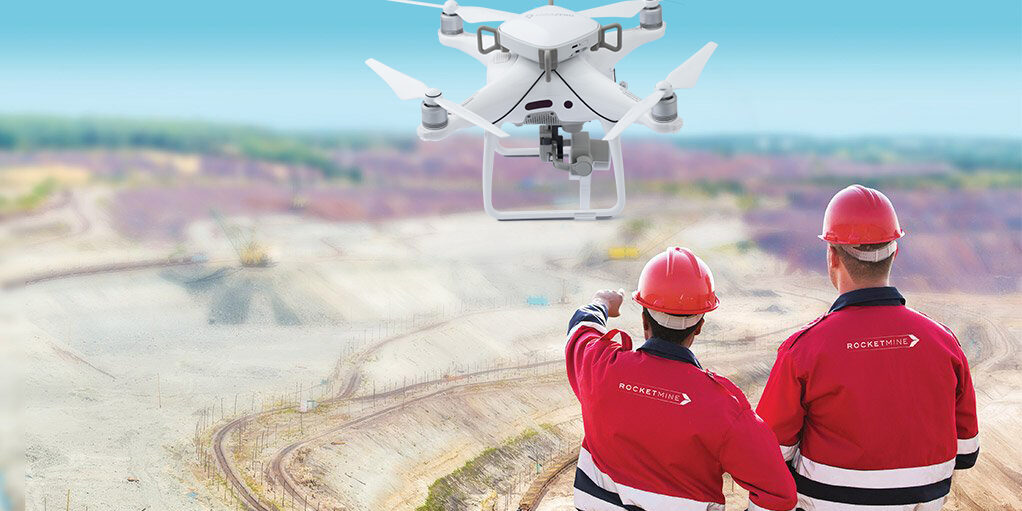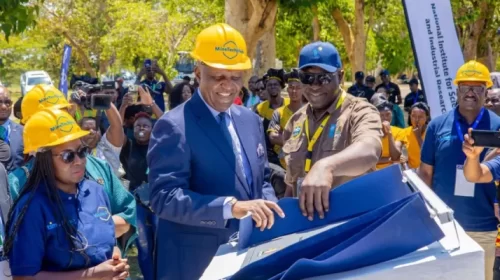Technology is making the mining industry safer
The mining industry has seen significant innovation in recent years, and technology is set to make an impact in one area in particular: safety. One of the primary concerns at mining sites is the safety of workers and equipment on the job. Poor air quality, low visibility, chemical hazards, and structural dangers can all pose a threat in risky areas.
The mining industry has already come a long way in developing technology and practices that improve safety conditions. New advancements are always being made, though, and the top four on the rise could change the industry forever.
Drones
Among the most exciting new technologies making waves in mining and construction are drones. These robots have a plethora of uses that can drastically improve site safety in mining operations. For example, drones are often used to survey areas that could be dangerous for a human worker to inspect. This surveying ability is the most valuable asset drones have to offer and can be applied in a number of different ways.
In the event of a tunnel collapse, drones can be used to help locate trapped workers without putting more people in harm’s way. They can also be utilized to keep an eye on normal day-to-day operations, like a remote security camera. Remote drone pilots can survey the work site from above, looking out for potential risks or safety hazards.
Drones can do more than fly cameras around, too. Sensor packages can be attached as a payload to drones with the proper weight capacity. Using sensors, mining teams can survey sites for potential risks that aren’t visible to the eye, like air contaminants. This allows already invaluable remote sensing technology to become mobile and thus even more versatile.
Automation
Automation is changing everything in mining, as well as construction and manufacturing, and for good reason. It has been shown to increase efficiency and productivity as well as safety. Automated mining technologies allow site leaders to keep human workers from dangerous tasks. People working in the industry shouldn’t be worried about “robots” eliminating human jobs any time soon, though.
Automation has actually played a significant role in mining for decades now. Digging is done by machines or automated drills. Rubble is hauled on conveyor belts. Machines have always been integral to modern mining and have made great strides to improve the health and safety of mine workers. Innovations in automation are taking things a step further.
The construction sector has reaped some amazing benefits from advancements in driverless technology over recent years. At sites around the world, autonomous mining trucks have moved over 3 billion tons of material and an autonomous train is being used for hauling at an iron ore site in Australia.
More and more autonomous vehicles can be expected to enter the mining industry in the near future, boosting efficiency and allowing workers to spend more time on safer, more rewarding jobs. Some robotic mine technologies also require a remote pilot, a role which a human operator could do from the safety of a control center.
Wearables
Wearables can arguably make the biggest impact on individual safety in the industry. While large-scale actions like automation improve overall site safety, wearables ensure that each individual team member is safe, as well. What’s great is that they can easily integrate with standard PPE at any site. There’s a variety of tools on the market for this, ranging in price and function.
The general idea is that wearable devices, often using IoT or RFID technology, track a worker’s activity around the site during the day, allowing workers to easily press a distress button in emergency situations. This tracking technology also allows site leaders to make sure no one accidentally strays into unsafe areas.
Additionally, in the event of a tunnel collapse or a situation where someone is trapped or lost, wearables make it easy to pinpoint workers’ precise locations. Wearables for construction and mining come in a variety of forms, from smartwatches to vest clip-on devices and even smart boots.
Geospatial Technology
Geospatial technology has been around for a while, but it makes a big difference in mining. It includes a few connected technologies: global positioning systems (GPS), remote sensing (RS), and geographic information systems (GIS). Most people are already familiar with GPS, even those outside the mining industry, since it has many consumer applications. In mining, GPS is crucial for location tracking on-site.
Remote sensing allows operators to collect images and data around their site from a safe distance, including data on hazards that can be difficult or impossible to detect with human senses. RS technology is highly customizable, as well. Different types of cameras are available to fit the precise needs of your site. For example, multispectral imaging is more expensive but offers full-color images and higher clarity. On the other hand, panchromatic imaging is more affordable and offers a wider field of view in black and white.
Geographic information systems connect the data from GPS and RS tools. GIS allows you to analyze all of your geospatial data and some GIS software programs even include modeling features. GIS can help reveal data patterns in addition to storing and modeling.
Powering safety
Technology initiatives are a great addition to mining operation safety plans. Mining is a vital part of the world economy and job market. It supplies the materials that create countless consumer goods and generate power for millions. Safe working conditions are crucial for making sure every team member at every mining site is able to do their job well, and today’s technology is making that possible.
More technological integration could also help attract new talent to the mining industry, driving innovation further. From geospatial tech to flying robots and everything in between, technology is powering the future of safety in the mining industry.
![]()





